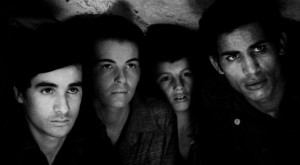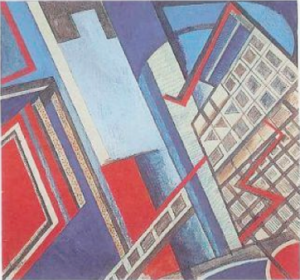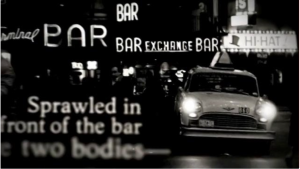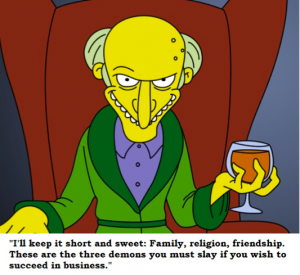Please select a slot in our doodle if you would like to present your work.
| Chair | Presenter 1 | Presenter 2 | |
| Thursday, 10 December 15 | Martin Hammer | Eleen Deprez | Zahra Tavassoli Zea |
| Thursday, 28 January 16 | Hans Maes | / | / |
| Thursday, 11 February 16 | Hans Maes | Dieter Declercq | Mark Windsor |
| Thursday, 10 March 16 | Grant Pooke | James Finch | Sandra Bowern |
| Thursday, 31 March 16 | Grant Pooke | Shelby Moser* | Margaret J. Schmitz |
| Thursday, 12 May 16 | Michael Newall | Tracey Falcon | Sara Janssen |
| Thursday, 26 May 16 | Martin Hammer | Jade Wackett | Luke Carver |
*Shelby Moser will be streaming in from sunny Pasadena, California to present her paper!
Thursday, 10 December 15, GS6
Chair: Martin Hammer
Eleen Deprez & Zahra Tavassoli Zea
download Zahra’s paper here
Thursday, 28 January, Jarman 5
Claim this slot!
Thursday, 11 February 16, Jarman 5
Chair: Hans Maes
Mark Windsor & Dieter Declercq
Thursday, 10 March 16, Jarman 5
Chair: Grant Pooke
James Finch & Sandra Bowern
Thursday, 31 March 16, Jarman 5
Chair: Grant Pooke
Shelby Moser & Margaret Schmitz
Thursday, 12 May 16, Jarman 6
Chair: Michael Newall
Tracey Falcon & Sara Janssen
Thursday, 26 May 16, Jarman 6
Chair: Martin Hammer
Jade Wackett & Luke Carver
Thursday, 9 June 16
Postgraduate Presentation Day
———
Monday 15 June 2015
14:00 – 15:30, KS2
Angelo Cioffi
Chair Murray Smith
Does it make sense to talk about political cinema?
Tuesday 9 June 2015
16:00 – 18:00, KS20
Margaret Schmitz & Sabina Sitoianu
Chair: Martin Hammer
Revisiting Precisionism: Vorticist Abstraction, and Anglo-American Interpretations of the Modern Metropolis
In the early 20th Century, certain artists in America and Britain saw the opportunity to create artistic national identities independent from the European mainstream. Simultaneously, skyscrapers as symbols of progress, revolution, and capitalistic conquest were cropping up in American cities, namely Chicago and New York, and the idea of the ‘modern metropolis’ or utopian epicentre resonated on both sides of the Atlantic. With this period in mind, I aim to compare British and American artists and their interpretations of the modern metropolis. As a case study, I will make connections between the British movement of Vorticism, formed in 1914 in the midst of a great war, and the American movement of Precisionism, a stylistic trend beginning around 1920 that eliminated extraneous detail in urban and industrial subjects through crispness, use of geometry and abstraction. By highlighting the 1917 Vorticist show at the Penguin Gallery in New York, which saw Vorticist work make the trans-Atlantic journey to America, Wyndham Lewis’ architectural manifesto, The Caliph’s Design (1919), and Vorticist involvement in American avant-garde magazines, I will illuminate how far reaching the movement actually was, and how the involvement of émigré artists on either side of the Atlantic perpetuated it, with a specific focus on American Precisionist sculptor John Storrs. Did British artists offer new aesthetic tutelage for American artists and their ‘iron jungles’? How far are these parallels routed in artistic exchange? I propose to present evidence as to what elucidates this dialogue and explore the broader and more extended narrative of the two bodies of artists associated with the visual tradition of integrating abstraction with the modern metropolis.
Sabina Sitoianu ⎮ Stasis, Movement, and Engagement in Terminal Bar (Stefan Nadelman, 2002)
This paper looks at the way in which different textual and textural elements of a documentary – live-action footage, still photography, and static images that are animated in post-production – all affect our comprehension of the index and therefore our emotional engagement with the film. The selected case study is Terminal Bar (Stephan Nadelman, 2002), a short documentary in which live -action footage interacts heavily with layers of photography and newspaper inserts.
Our spectatorial engagement and emotional response to documentaries is not only related to this comprehension that the subject-matter is purported as veridical, but in this case especially, it can also be tied to the particular use of stasis and movement and our cognitive comprehension of each.
Tuesday 12 May 2015
15:00 – 17:00, Jarman 5
Sara Janssen & Dieter Declercq
Chair: Margrethe Bruun Vaage
Sara Janssen ⎮Sensate Vision: From Maximum Visibility to Haptic Erotics
“We all know what sex looks like. Many movies have tried to capture the magic, but most can only bring home the tricks”. This blurb from the sexual explicit documentary Skin.Like.Sun (2010), illustrates a much-heard critique on the representation of sex in mainstream pornography, namely that porn focuses on exposing the mechanics of the sexual act. However, in recent years, a collection of alternative pornography has been released, which instead emphasizes the tactile and visceral experience of the sexual encounter. Rather than focusing on a graphic representation of the technicalities of the sexual act, this body of work troubles the premise that pornography and intimacy are mutually exclusive, adopting what Bettina Papenburg and Marta Zarzycka call a “carnal aesthetics” (2013). This paper focuses on the way in which this approach has specifically been deployed by filmmakers interested in exploring female sexuality, by discussing two films: One Night Stand (2006) and Touch (2013). It addresses the ways in which these films constitute a negotiation of visibility, understood as a particular feminist strategy that troubles the conventional connection between pornography, visibility, and the production of truth.
Dieter Declercq⎮What is good satire? (And why exactly do I value The Simpsons so highly?)
Quite a large part of my time at university has been spent thinking about The Simpsons, which I’ve identified as one of the most significant examples of contemporary satire. But I’ve done more than that. Throughout my writing, I’ve also been praising The Simpsons as good satire – and this is where matters become complicated. Whereas I can fairly easily explain why The Simpsons is satire, and why it is a significant example of satire, I find it much more difficult to answer why it is good satire. The Simpsons is satire (loosely) because it uses humour and irony to offer a moral critique of certain social practices; it has been one of the most significant contemporary satires because of its global cultural impact; and it is good satire because…
I hesitate to identify The Simpsons as good satire because of the following intuition, which I will further qualify and develop in this WIP session: for The Simpsons to be good satire, it must not only be successful at being funny, but it must also be successful at offering a moral critique of certain social practices (through being funny). Defending a moderate moralism, I argue that moral value interacts with aesthetic value in satire, as satire is a form of art which has an inherent ethical dimension (so evaluating satire in terms of the quality of its moral perception is not invoking evaluative criteria alien to its aesthetic value (Carroll 2000)). Following this moderate moralism, suppose the moral perception of The Simpsons is at best trivial and superficial (Stecker 2008), the series will not be good satire (even if it is very funny). Therefore, although I’ve always championed The Simpsons as good satire, I’m starting to worry I might have been championing it for the wrong reasons: The Simpsons definitely succeeds at being funny, but does it also succeed at being morally perceptive? Maybe it’s just so funny I’ve been too charitable in judging the quality of its moral perception all along… That said, what qualities must the moral perception of satire exhibit for it to be good satire? It is this question which I will begin to explore in this WIP session.
Thursday 19 March 2015
14:00 – 16:00
James Finch & Mark Windsor
Chair: Jonathan Friday
‘The image equals the object itself’: On feeling towards imagesMark Windsor
When considering our emotional response to an image, let’s say a portrait or a photograph of a loved one, it is a common assumption to distinguish the image as the stimulus that brings about the emotion, and the person the image depicts as the object or target of that emotion. The central claim I want to explore in this paper is that our emotional engagement with images is such that frequently images function not only to bring about our feelings for the objects they depict, but also as the object or target of those feelings—that, at a deep level of affective engagement, we experience images as if they were ontologically equivalent to their depicted content.
‘Do you want a puff? Do you want some coca cola? Have we got some more beer?’: interviewing Franz KlineJames Finch‘I don’t wake up in the morning and think about Franz Kline’, Hans Ulrich Obrist is quoted as saying in a recent New Yorker interview, as evidence of his current scepticism about painting. This is only one of a handful of examples I’ve found where the abstract expressionist Franz Kline (1910-62) seems to have been taken as the personification of painting, engaged with his medium and (in contrast with contemporaries such as Rothko, Newman and Motherwell) ‘not a thinker at all’ (Lawrence Alloway). Kline had little interest in articulating his ideas in print, but due to the popularisation of the artist interview which accompanied the rise of the New York School, a substantial body of text nevertheless accompanies his work. So what do these interviews tell us about Kline, the interviewers, and the interview genre itself?
Thursday 29February 2015
16:00 – 17:00, Jarman 5
Eleen Deprez
Chair: Michael Newall
Exhibitions and Installations: differentiating between curatorial installation and Installation Art.
Eleen DeprezThe aim of this paper is to discuss the differences and similarities between exhibitions and works of Installation Art. More specifically I will demonstrate that (1) exhibitions share a mode of production and a core ontological nature with Installation Art, and (2) that an important distinction between the two can nonetheless be made.
Firstly we will show that both Installation Art and curatorial practice are artefactual and institutional practices (Thomasson, 2003) and that they employ the same ‘artistic medium’. This shared artistic medium is to be understood as a purposeful system of production, different than a ‘physical medium’ which is exhausted by the mere materials that is used in the work of art (Margolis, 1980: 41-42). I describe the artistic medium of Installation Art and curatorial practice as the purposeful presentation of a site. Following Dominic Lopes’ understanding of medium (Lopes 2014: 139) this can be expressed as a specific set of resource and technique. The shared medium will explain why some projects are hard to categorise. For example: Marcel Broodthaers ‘Musée d’Art Moderne, Département des Aigles’, Lucy Lippard ‘557,087’, or Hans Haacke ‘Seurat, Les Poseuses’.
Secondly we will differentiate between artistic installation and curatorial installation by demonstrating that only the first is an appreciative practice. An appreciative practice is a practice that produces an appreciative kind. I will show that exhibitions are not an appreciative kind. This does not mean that we can’t recognise or enjoy its qualities, but it means that Exhibition is not a category that is “relevant for appreciation” (Lopes, 2014). The products of curatorial installation are not compared amongst each other with regards to their essential features; the broad category ‘Exhibition’ is thus uninformative for evaluation.
This understanding will enable a novel analysis of curatorial practice, which highlights its artistic qualities, and ground a definitional project of Installation Art, which will clarify its distinct properties as an art form.
Tuesday 9 December 2014
18:00 – 20:00, Jarman 7
Shelby Moser
Chair: Hans Maes
‘Street art and deception or On ascribing genuineness and deception to street art’
Street Art is not an easily definable category of art and members within this category are equally difficult to pin down. These artworks tend to vary in location, style and method of their applications — factors which often elude necessary, sufficient or even common conditions for this category. In this paper, it is not my aim to exhaust street art’s perceptual features or conditions but, rather, to examine one feature that is salient for appreciation and membership, namely, its illicitness. In contribution toward a theory of street art, I will analyse what it means for a work to be genuine, using Carolyn Korsmeyer’s definition of genuineness, and propose a necessary non-perceptual feature of street art, which, I admit, is potentially controversial.





